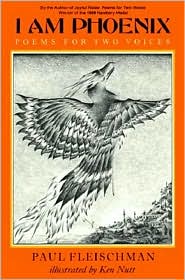B. Author: Judith St. George
C. Illustrator: David Small
D. Publisher: Philomel Books, a division of Penguin Putnam Books
E. Genre: Picture Book - Informational Text
F. Reading Level: Grades 3 - 5
G. Awards: Caldecott Honor Book, ALA Notable Children's Book
H. Summary: So You Want to be President? is an extremely entertaining and hilarious children's picture book about our country's presidents. This book goes over what it takes to become president mostly by grouping the presidents together by characteristics that they share. Some of the information about our former presidents has been on who has served in one of our country's wars, what fun activities they've done in the White House, common names, birth places, age, sense of humor, physical appearance, related presidents, siblings, and the list goes on and on. The book has a great combination of real facts, fun facts, and hilarious images (Presidents included go from George Washington to Bill Clinton). The illustrations are done in ink, watercolor, and pastel chalk. The backgrounds are all colorful, lively, and entertaining. Each page has a pictures of presidents, and in the back of the book is an index that tells which president is on which page. The back of the book also has section of information on all of the presidents up to Bill Clinton; each president has a few lines devoted solely to them.
I. Response: I absolutely love So You Want to be President? I wish in fourth and fifth grade, when I remember studying the presidents and our nation's history, that we had had this book as a resource. I think the book has the perfect combination of real facts, fun facts, and comedy to get students interested in the topic of our former presidents, and to maybe even lighten to mood and the amount that the students have to learn. The illustrations are enough to keep any child entertained; the pictures are very comical and the presidents' faces and features tend to be over-done, kind of like the cartoon artists that draw a picture of you surfing or roller skating with the giant head.
J. Teaching Ideas: Reading So You Want to be President? would make the perfect book to read as a class, or to the class, as a transition into a unit on our nation's former presidents. Not only does this book discuss facts about many of the presidents, it gives some great facts on what it actually takes to become president: age restrictions and the oath that all presidents have to take. When I did a simple search online, I found lesson plan after lesson plan. One website I found, TeacherVision, had ten ideas to use in the classroom; some of the ideas include creating a game show about that presidents with 'life-lines' and 'phone-a-friend,' students could pick one president to research for a presentation (dress up like your president), make a running for president speech, etc. Scholastic also has a lesson plan on So You Want to be President? This lesson plan involves writing details and characteristics of students' lives, creating a time-line, students should also include what they plan to accomplish in their life. The number of classroom applications that this book has are so large, I couldn't even sort through all of the internet lesson plans I found. So You Want to be President? is a great addition for the upper elementary grade classrooms!









